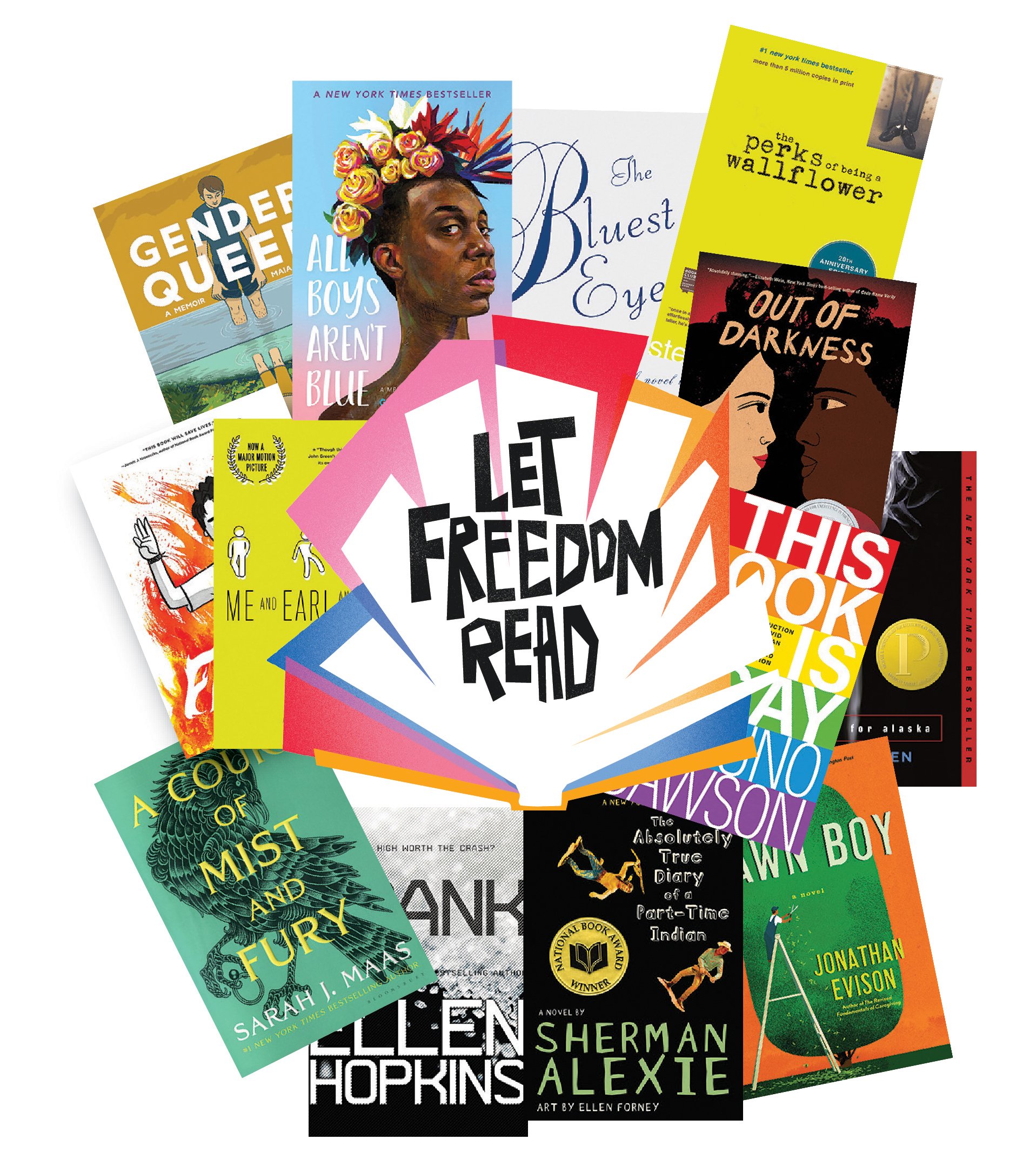let freedom read
Banned Book Week hits close to home
Words by B.L. Crook
These were the most challenged books of 2022, as reported by the American Library Association
It’s the time of year again for chunky sweaters, new pencil cases and remembering that you can’t take intellectual freedom for granted. Banned Book Week takes place October 1-7 this year, and its theme—Let Freedom Read!—feels particularly urgent. The American Library Association (ALA) reported that attempts to ban books in schools and libraries rose by 38% in 2022, with a record-breaking 2,571 titles targeted for censorship nationwide.
Censorship in the U.S. is nothing new. It dates back to the 1600s, when colonialist texts challenging Calvinist views were frequently outlawed, and to the Civil War-era, when lawmakers and community leaders from southern states banned anti-slavery books, including Harriet Beecher Stowe’s Uncle Tom’s Cabin.
Over the years, Langston Hughes, Toni Morrison, Kurt Vonnegut, Maya Angelou, Alice Walker, Harper Lee, Margaret Atwood and J.D. Salinger have all been accused of including vulgarity, immorality, antiauthoritarianism and sexually explicit content in their literature. Fans are likely to know their works as disquieting to the soul and prompting reflection. More surprising, perhaps, are other books that various school districts and libraries have banned over time, including E.B White’s Charlotte’s Web, John Steinbeck’s The Grapes of Wrath, P.L. Travers’ Mary Poppins, Shel Silverstein’s A Light in the Attic, The Diary of Anne Frank, and numerous books by Judy Blume (the most frequently banned author in the U.S. to date).
Even local Kitsap authors have experienced “banned-book” notoriety. Dav Pilkey’s Captain Underpants series of comic novels have been censored for antiauthoritarian content, while David Guterson’s bestselling, prize-winning novel, Snow Falling on Cedars, and Jonathan Evison’s 2018 book, Lawn Boy, were both challenged on account of profanity and sexual content.
Like most books targeted for removal in recent years, Lawn Boy features members o f the LGBTQIA+ community and people of color. It landed seventh on the ALA’s list of the most challenged books last year. First on that list is Maia Kobabe’s Gender Queer: A Memoir, which administrators removed from the library at Olympic High School in Bremerton in 2021. Central Kitsap School District later reversed course, returning the book to the library’s shelves.
“Funny how nearly every single book on the ALA’s Most Challenged List features nonwhite or nonbinary characters,” Evison told Tideland via email. “Hmm, could there be a pattern here? We are dealing with a resourceful, highly motivated, and very vocal minority determined to insinuate themselves in policy-making at every level of governance. It seems obvious on the surface that these self-appointed gatekeepers don’t want ‘those people’ to have voices, and by ‘those people,’ I mean Black and brown and gay and trans people—in short, anyone who doesn’t fit neatly into their white, straight, Christian ideal of America, a country largely built on the backs of nonwhite, non-Christian people, and a country traditionally celebrated for its pluralism.”
Texas, Florida and Pennsylvania lead the nation in book bans, but Washington State has reason to stay vigilant—as incidents at Olympic High School and in two other school districts demonstrate. Kent School District removed three titles from library shelves last year, reinstating them after the ACLU of Washington threatened legal action. Walla Wallla High School faced pressure to ban four titles but the school board there rebuffed the effort. Meanwhile, Moms For Liberty, a Florida-based pressure group that campaigns for book bans in public schools, has 10 active chapters in Washington, including one in Kitsap County.
“The benefit of free access to books is an informed society,” says Meg Beade Stowe, Kitsap Youth Services librarian. “Children need to see themselves in the books they read, learn about people and places different from them, and empathize with people/creatures/situations different from what they know. This is how children realize their importance in the world, gain empathy to build community with one another and learn to respect nature.”

